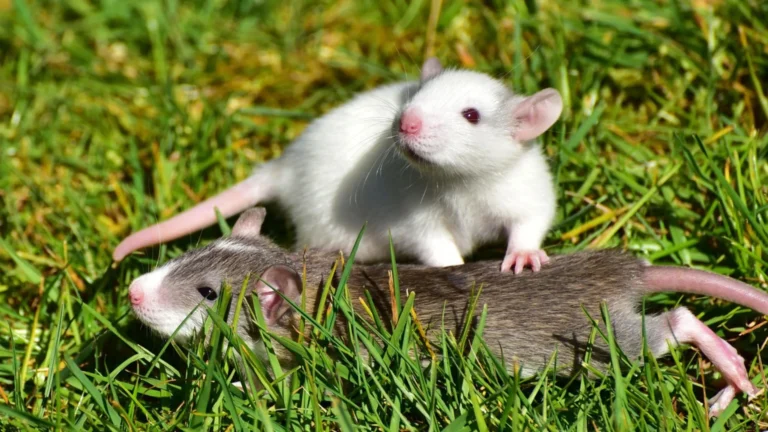How Long Can a Hamster Live? Care Tips for a Longer Life
Table of Contents
Many hamster owners wonder how long their pets will live. Knowing this can help you care for your hamster better. Hamsters can live from 1.5 to 3 years, but with the right care, they can live longer.
Hamster breeds vary in lifespan. Syrian hamsters usually live longer than dwarf ones. Your care greatly affects how long your hamster lives. Things like diet, environment, and daily care are key to their health.
Creating a great home for your hamster is more than just basics. It’s about good food, exercise, mental fun, and health checks. Every choice you make can help your hamster live longer and happier.
This guide will show you how to care for your hamster to extend its life. You’ll learn about the best diet and health tips. These will help keep your hamster happy and healthy.
Understanding Hamster Life Expectancy
Thinking about getting a hamster as a pet? Knowing how long they live is key to caring for them well. Hamsters live different lengths of time based on their type and other factors.
Average Lifespan by Species
Each hamster type lives a certain amount of years. This helps you pick the best pet for you:
- Syrian hamster: Lives about 2-3 years
- Roborovski dwarf hamster: Usually lives 3-4 years
- Campbell’s dwarf hamster: Lives 1.5-2 years on average
- Chinese hamster: Lives 2-3 years
Wild vs. Pet Hamster Longevity
Hamsters kept as pets live longer than those in the wild. Wild hamsters face dangers like predators and harsh weather. But, pet hamsters get controlled environments, regular food, and vet care.
Factors Affecting Life Expectancy
Several things affect how long a hamster lives:
- Genetic background
- Quality of diet
- Living environment
- Stress levels
- Regular health checks
Knowing these factors helps your hamster live a long, joyful life.
How Long Can a Hamster Live in Different Environments
Knowing how long a hamster lives depends a lot on where they live. Taking good care of your pet hamster is key to their long life and health. Hamsters living in homes usually live longer than those in the wild because of better living conditions.
Different places can greatly affect a hamster’s life span. Here are important things that affect how long a hamster lives:
- Pet Homes: The best place for hamsters to live a long life
- Laboratory Settings: Places with controlled conditions and expert care
- Pet Stores: Temporary homes with varying care quality
- Wild Environments: The toughest place with the shortest life span
In a well-kept home, hamsters can live for 2-3 years. It’s very important to take good care of your pet hamster to help them live longer. Things like temperature, space, food, and stress levels all play a big role in their life span.
“A safe, enriching environment can add months or even years to a hamster’s life.” – Veterinary Exotic Animal Care Specialists
By making a consistent, safe home for your hamster, you can help them live longer. Keep them away from extreme temperatures, give them enough space, feed them right, and reduce stress to keep them healthy and long-lived.
Essential Housing Requirements for Longevity
Creating the perfect home for your pet hamster is key to their long, healthy life. The right housing environment greatly affects your hamster’s well-being and lifespan.
Cage Size and Ventilation Matters
Space is crucial in caring for hamsters. Your hamster needs a spacious habitat for natural movement and exploration. Experts suggest a minimum cage size of 450 square inches of floor space.
This size provides enough room for:
- Running and exercising
- Burrowing and exploring
- Establishing different activity zones
Proper ventilation is also vital. Ensure your hamster’s cage has adequate air circulation to prevent respiratory issues and maintain a healthy living environment.
Temperature and Humidity Control
Hamsters are sensitive to environmental conditions. Keep the temperature between 65-75°F (18-24°C) consistent. Extreme temperatures can cause stress and health problems for your small pet.
Choosing the Right Bedding and Nesting Materials
Choose bedding materials that mimic natural habitats and support your hamster’s instinctive behaviors. Recommended options include:
- Soft paper-based bedding
- Aspen wood shavings
- Unscented, chemical-free materials
Provide nesting materials for your hamster to create a comfortable, secure sleeping area. This supports their natural burrowing instincts and helps reduce stress.
“A comfortable home is the foundation of a happy, healthy hamster.” – Veterinary Hamster Experts
Optimal Nutrition for Extended Lifespan
Keeping your pet hamster healthy starts with good nutrition. A balanced diet is key to their long-term health. It can even help them live longer.
Your hamster needs a mix of nutrients for their best health. Commercial hamster food is a big part of their diet. It gives them important vitamins and minerals.
- Commercial pellet food: 70-80% of daily diet
- Fresh vegetables: Small daily portions
- Occasional protein sources: Mealworms or boiled egg
- Limited fruit treats: Once or twice weekly
It’s important to control how much food your hamster eats. Too much can lead to obesity. Moderation is key when giving treats.
Each hamster species has its own food needs. Syrian hamsters might need different food than dwarf hamsters. Talking to a vet can help you find the right food for your pet.
Nutrition is not just about quantity, but about providing a diverse and balanced diet that meets all your hamster’s dietary requirements.
Start slow when introducing new foods to your hamster. Watch for any bad reactions. Make sure they always have fresh, clean water for their health.
Exercise and Enrichment Activities
Physical activity is key for hamster health. Your furry friend needs exercise and mental play to be happy and healthy. Experts say at least two hours of daily activity is best.
Types of Exercise Equipment
Choosing the right exercise gear can make a big difference. Here are some must-haves:
- Running wheels (solid surface to prevent leg injuries)
- Exercise balls for supervised play
- Climbing structures
- Tunnels and mazes
Mental Stimulation Needs
Mental play is as important as physical exercise. Boredom can lead to stress and health problems. Here are some ideas to keep your hamster’s mind sharp:
- Rotate toys weekly
- Provide puzzle feeders
- Create obstacle courses
- Introduce new textures and hiding spots
Safe Play Activities
Playtime must be safe for your hamster. Follow this guide to ensure their safety:
| Activity | Safety Considerations | Duration |
|---|---|---|
| Out-of-cage exploration | Supervised, hamster-proofed area | 15-20 minutes |
| Exercise ball | Clean surface, limited time | 10-15 minutes |
| Climbing structures | Secure, stable setup | As desired |
Regular exercise and mental play are crucial for hamster care. By offering a variety of activities, you’ll help your hamster stay healthy and happy.
Common Health Issues Affecting Lifespan
Knowing about hamster health is key to making your pet live longer. Some medical problems can really hurt a hamster’s health and life span. Spotting these issues early can help you give your hamster the care it needs.
Some big health challenges for hamsters include:
- Wet Tail Disease: A serious gut infection that can be deadly for hamsters
- Respiratory infections that make it hard to breathe and fight off sickness
- Dental issues that make eating hard and can lead to malnutrition
- Diabetes, which can harm a hamster’s metabolic health
Dental problems are a big deal for hamsters. Teeth that grow too long can stop them from eating right. This can lead to weight loss and a weak immune system. Taking your hamster to the vet regularly can catch these problems early.
To keep your hamster healthy, you should:
- Keep their living area clean
- Feed them a balanced diet
- Watch them every day for any changes
- Take them to the vet for check-ups
As hamsters get older, they face more health problems. Paying attention to changes in their appetite, activity, and mood can help catch issues early. This way, you can get help from a vet right away.
Preventive Care and Regular Health Monitoring
Keeping your hamster healthy needs regular care. Watching for health problems early helps your hamster live a long, happy life. It’s important to manage your hamster’s health well.
Recognizing Age-Related Changes
Hamsters change as they get older. Look out for these signs:
- Reduced activity levels
- Slower movement
- Changes in fur color or texture
- Decreased appetite
- Weight loss or gain
Some changes are normal, but others might mean health problems. Knowing the difference is key to good care.
Veterinary Care Guidelines
Knowing when to see a vet is important for hamster health. Here are times when you should visit a vet:
- Significant changes in eating or drinking habits
- Visible lumps or swellings
- Difficulty breathing
- Unusual discharge from eyes or nose
- Persistent lethargy
Hamsters over two years old should see a vet every year. Your vet can give advice for older hamsters and help with age-related issues.
Home Health Monitoring Tips
Here are easy ways to keep an eye on your hamster’s health:
- Weigh your hamster monthly
- Check for any physical abnormalities
- Monitor bathroom habits
- Observe daily energy levels
- Maintain a clean living environment
Spotting health problems early can make your hamster’s life better and longer.
Stress Factors That Impact Hamster Longevity
Caring for hamsters means knowing how stress can shorten their lives. These small animals are very sensitive to changes and stress. It can harm their health and happiness.
There are several stress factors that can hurt your hamster’s health:
- Handling techniques: Rough or wrong handling can make them very anxious
- Loud noises from household activities
- Sudden environmental shifts
- Presence of predatory pets
- Inconsistent daily routines
Stress can weaken your hamster’s immune system. It can make them lose appetite, heal slower, and get sick easier. This can shorten their life.
To reduce stress when caring for hamsters, try these tips:
- Create a quiet, stable environment
- Use gentle handling techniques
- Maintain consistent feeding schedules
- Provide secure hiding spaces
- Limit exposure to sudden loud sounds
Knowing and managing stress can help your hamster live longer and healthier. Being patient, observing, and being calm are key. They help create a safe and loving home for these delicate pets.
Breeding and Genetic Considerations
Knowing about genetic factors can help you pick a healthy hamster. Different hamster species have unique genes that affect their lifespan and health.
When picking a hamster, look at the breed’s genetic background. Syrian and dwarf hamsters have different genes that impact their lifespan.
- Syrian hamsters typically live 2-3 years
- Dwarf hamster breeds may have shorter lifespans
- Roborovski hamsters often live slightly longer than other species
Good breeding practices are key to healthier hamsters. Genetic diversity and careful selection help avoid health issues that can shorten a hamster’s life.
“A hamster’s genetic makeup is the foundation of its potential longevity and overall health.”
When choosing a hamster, check the breeder’s reputation. Look for breeders who:
- Conduct health screenings
- Maintain clean breeding environments
- Prioritize genetic diversity
- Avoid excessive inbreeding
Understanding genetics helps you choose a hamster for a longer, healthier life.
Special Care Tips for Senior Hamsters
As your hamster gets older, caring for them needs special attention. Senior hamsters have unique physical and health needs. They require tailored care to keep them comfortable.
Aging hamsters move less and see less. You need to adjust how you care for them. This ensures they stay happy and healthy.
- Provide softer food options that are easier to chew
- Lower cage heights to prevent fall risks
- Create more accessible living spaces
- Reduce climbing requirements
Nutrition is key for aging hamsters. Here are some diet changes to consider:
- Switch to senior-specific hamster food
- Offer protein-rich soft foods
- Maintain hydration with easily accessible water sources
Regular vet visits are crucial for senior hamsters. Watch for signs of age-related issues like arthritis and vision loss. Your vet can offer advice on managing your pet’s health.
Make their environment comfortable and stress-free. Use soft bedding and handle them gently. Quiet spaces can greatly improve their life in these later years.
Conclusion
Learning how long a hamster can live starts with good care and attention. Your efforts to create a great environment can help your hamster live longer than expected. Every part of care, like food and fun activities, is important for your hamster’s health and long life.
Hamsters can live between 2-3 years, depending on the type. By following the tips in this guide, you can help your hamster live a happy life. Things like the right home, good food, vet visits, and fun activities are key for a healthy hamster.
Every hamster is different, so they need different care. Watching your hamster, keeping a routine, and acting fast when they’re sick are very important. Your love and care are the most important things for your hamster’s happy life.
Even though hamsters don’t live as long as some pets, they bring so much joy. By using the tips from this guide, you can give your hamster the best care. This will help you make many happy memories with your tiny, cute friend.







